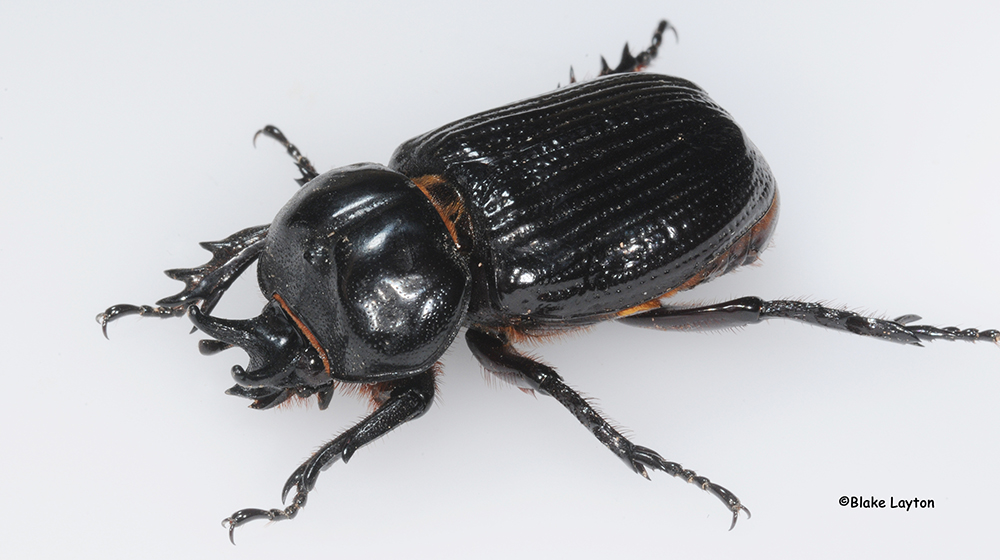Triceratops Beetle Vol. 2, No. 25

Phileurus truncatus
Order: Coleoptera
Family: Scarabaeidae
With a body length ranging from 1 to 1.5 inches, triceratops beetles are one of our largest beetle species, but they are not very common. When they are found, it is usually in a situation where they were attracted to lights and crash landed in the area. This specimen was found floating in a pet watering bowl near an exterior light. Both males and females have the three small horns on their heads that are responsible for their name. These beetles are able to make small squeaking sounds when handled or disturbed, though this particular specimen remained silent while being photographed and released.
Triceratops beetles belong to a large group of beetles known as scarab beetles. Their biology is not well-known, but is similar to that of some of our other large scarabs, such as ox beetles and Eastern Hercules beetles. Like these other large scarabs, triceratops beetle larvae feed on decaying wood, especially that of oak, and some literature suggests they may breed in decaying wood in tree holes. Adults are predatory, feeding on the larvae of other wood-inhabiting insects, a behavior that helps reduce the competition for their young.
Adult triceratops beetles are relatively long-lived and are sometimes kept as pets by people who rear beetles as a hobby. Yes, there really are people who enjoy keeping and rearing scarabs and other large beetle species as pets. This hobby is especially popular in Japan, where there are shops that specialize solely in selling live beetles and the equipment and supplies needed to raise them. Similar cyber stores exist here in the US.
Blake Layton, Extension Entomology Specialist, Mississippi State University Extension Service. The information given here is for educational purposes only. Always read and follow current label directions. Specific commercial products are mentioned as examples only and reference to specific products or trade names is made with the understanding that no discrimination is intended to other products that may also be suitable and appropriately labeled.

